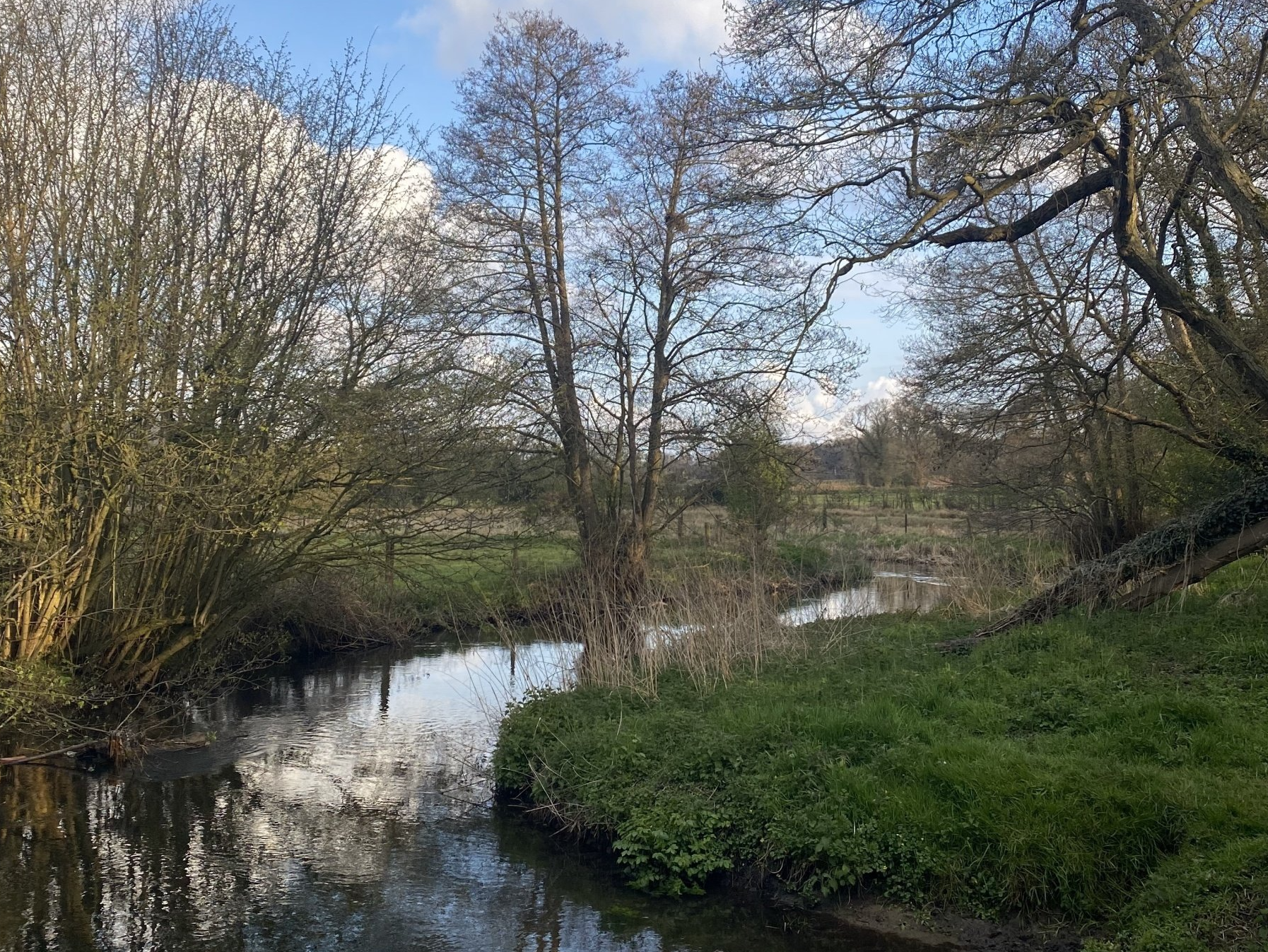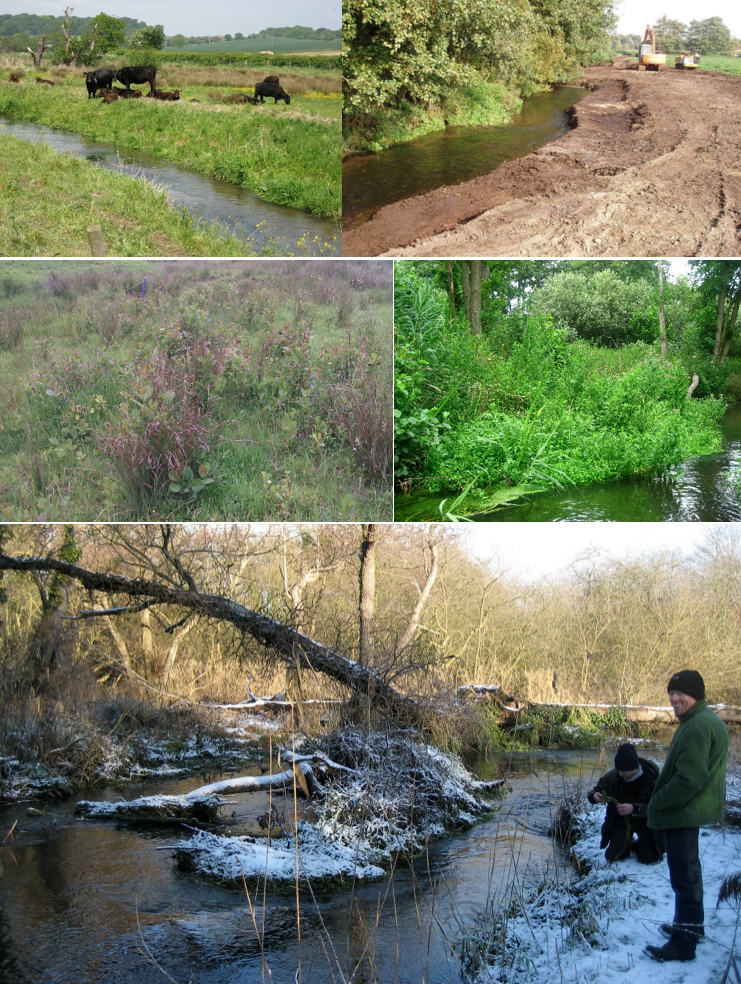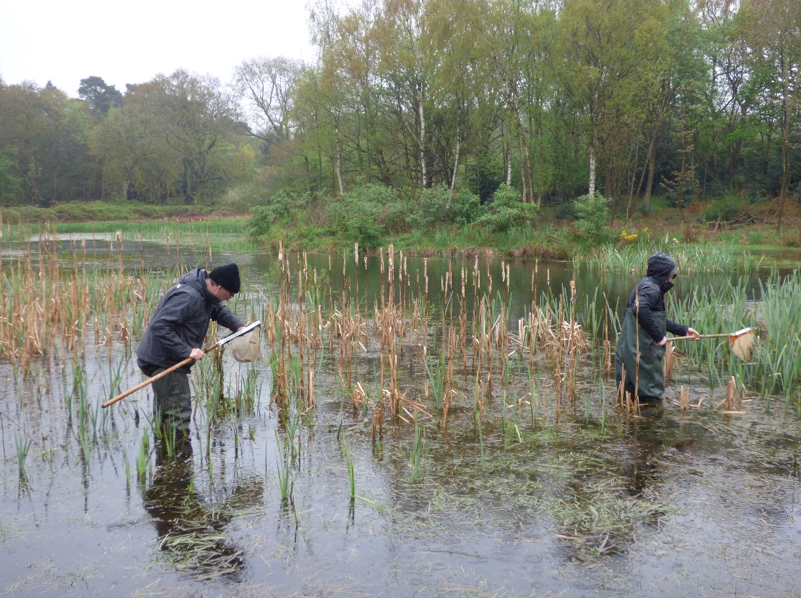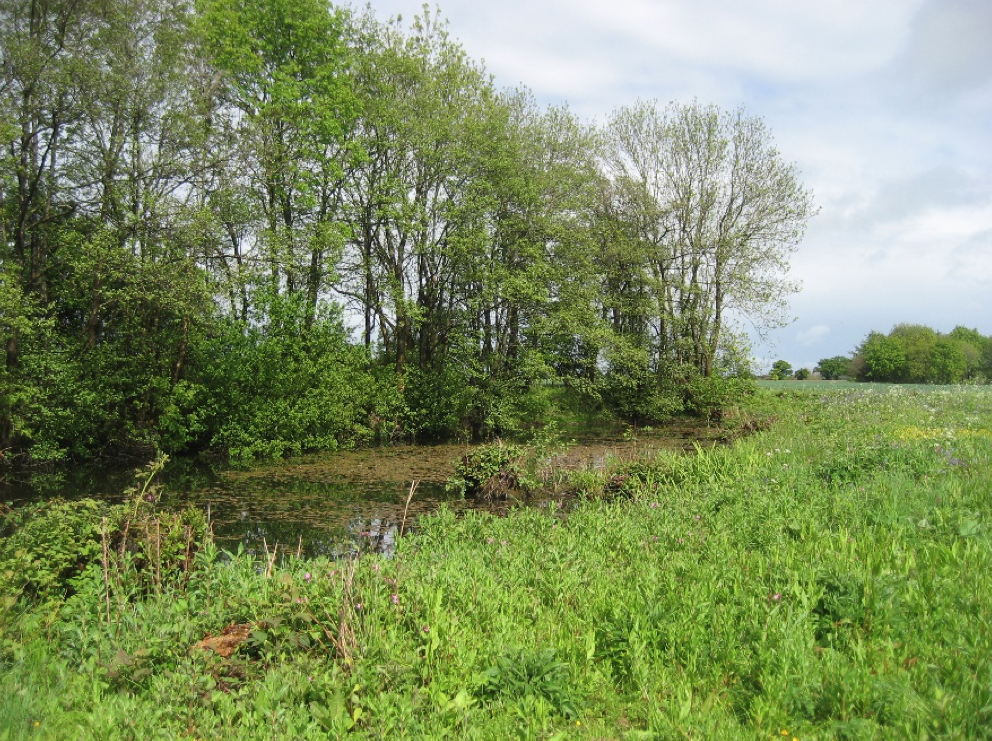Wetlands - Restoring East Anglia’s Wetlands
Professor Carl Sayer from University College London is one of the world's leading voices on wetland reintroduction and sits on WildEast’s very own steering group.
In this piece written exclusively for the newsletter, he argues that nature recovery is possible if we think big and act decisively.
Positive change he says can be achieved when we address the cause of environmental problems, work at scale, and let nature heal itself.

East Anglia is home to some of the UK’s most important wetlands and many associated rare and iconic species. But all is not well, and ecological restoration is urgently needed. A nature recovery is possible if we think big and act decisively. WildEast is a movement that seeks to champion this in eastern England.
In one lifetime, we have seen once clear and fish-filled East Anglian rivers become featureless, dredged drains, dis-connected from floodplains by spoil heaps and running brown with mud or grey-green with bacteria and algae. The roach and dace that glinted on clean gravels have dwindled, as have perch and brown trout, and one poor eel-like fish, the burbot, vanished after the 1970s, with a lesson to teach us. Wet flood meadows and fens have been drained and ploughed up and now conservationists treasure a few specks of these formerly extensive and precious habitats.
'A nature recovery is possible if we think big and act decisively'
Lakes, such as the Norfolk and Suffolk Broads, that once supported vast mosaics of wetland plants in crystal waters, have become murky and featureless. Ponds, that were present in almost every field in some areas of eastern England, have been filled in by torn out hedges, soil and burnt tree stumps, indicated only by ghostly shadows in the fields, while survivor ponds have been lost in a tangle of willow and thorn. This is hard to take if you love nature. But the natural world can recover, with this especially true of wetlands.
The science of restoration ecology tells us that success comes from following three key principles: 1). addressing the causes of environmental problems – the further we work away from the source of a problem the less likely we are to be successful; 2). working at scales appropriate to the problem – this often means big scales, and 3). letting nature heal itself as far as possible. Traditional conservation has undoubtedly slowed the decline of the aquatic environment, but it has not always followed these principles and hence success has sometimes been limited.
Lessons have been learned, however, and there is a growing realisation that, to bring about recovery, the future needs to be one of much bigger and better-connected aquatic landscapes. We need to reduce water use, and limit abstraction in water-stressed catchments – without water, wetlands can’t be wetlands. We need to bring clean water back into rivers and the wider countryside, treating wastewater to much higher standards and reducing pollution from agriculture, prosecuting where there are breaches in regulation. In particular, filling our rivers with poorly treated and frequently untreated sewage during storm events, is strangling them - our waters and wildlife cannot cope with this mismanagement of dirty water.
A Norfolk river with high flood banks (Top Left) that can easily be removed to allow floodwaters on to the floodplain (Top Right). With the first flood alder seeds are deposited and trees start to grow amongst the re-colonising wetland vegetation (Middle Left) and eventually fall in creating wild, complex river edge habitat (Middle Right). Given the chance the river has re-wilded itself creating islands and new channels (Bottom). All we have done is to take near river land out of production and remove flood banks - the river and wetland seedbanks will do the rest.
A major focus of a future nature recovery network needs to be land-use change and this is where WildEast may be most helpful. To have a genuine major positive impact, a Map of Dreams for wetlands will need to see reversion of low-lying former floodplain and high pollution-risk land that is currently farmed, as cultivating these areas intensively is not sustainable. It is urgent that we farm back from rivers so that they are not fed by pollutants every time it rains, and we need to give rivers the space they need to move and to flood. Fields containing headwater streams should be left to natural forest development, or species-rich meadow and fen should be re-created, based on patience rather than packet.
Let's have exciting habitat mosaics in widened river corridors, but we need to make sure that any field drains are broken before they enter these critical wetland buffer areas. If we can do this water quality in our rivers and downstream lakes will get better and better and we will see clear waters again. Currently, a vast area of former floodplain is farmed, even though this land is often marginal. Further, for mile after mile, flood banks artificially isolate rivers from floodplains. Following principle number one - we need to un-do this to see wetland recovery.
'It is urgent that we farm back from rivers so that they are not fed by pollutants every time it rains, and we need to give rivers the space they need to move and to flood'
Once we have committed to farming back from river corridors, we need to remove the flood banks of the 1960s/1970s, to as far as possible, re-connect rivers to their floodplains. This bank removal will create low-lying ground next to rivers (as opposed to weird dry ridges) and increase flood storage over large areas. On the first flood tree seeds will be deposited on wet river edge ground and species such as alder will start to colonise. In about a decade, as long as grazing has not been too intense, there will be well wooded riverbanks and early floodplain forest development. And after this the magic will start within the flowing river – trees will fall in and if we live with beavers they will be felled and brought into the channel. Rivers will start to become more complex.
Surveying a near pristine river corridor in North Norfolk on a rainy spring morning
Fallen trees, especially big ones, will create the very habitats that are essential for river fisheries. A fallen tree submerged in a river is a three-dimensional invertebrate food-larder and if it spans a river it is a bridge for a travelling otter and other mammals not wishing to get their feet wet. It is the place where mysterious eels and excitingly large wild brown trout, perch and chub hide. Fallen trees trap silt, but also engineer scour elsewhere and this both creates and flushes spawning gravels as well as generating deeper pools, a frequent missing habitat in today’s rivers. But sometimes, if we dare leave the river to its own will, a tree will fall in such a way that it blocks the channel, inviting the river to search for a new course. Suddenly, we are looking at a wild mobile river with floodplain cut-offs forming to a chorus of happy croaks. At this point the great lost burbot will be winking at the river saying please, please, because, in connecting rivers with floodplain still waters, we will have tackled the major cause of its extinction. If we free floodplains from farming and stand back, this is genuinely what would happen, with trees and beavers leading the restoration charge.
By allowing rivers to run through much widened and wild river corridors, huge benefits would be reaped: reduced flooding due to increased floodplain storage, improved water quality through removal of much agricultural and wastewater pollution, elevated carbon sequestration within wet woodlands, fens and meadows and the re-generation of large areas of wild, highly connected species-filled habitat. All associated swamps, lakes and backwaters would improve, and nature reserve managers would be less upset when rivers flood over our last few nutrient-poor fens and hay meadows because floodwaters would be cleaner. They may even be relatively clear. Imagine a clear water flood.
A vibrant, restored Norfolk farmland pond
But we need to do more, and we need to look out from river valleys to all other remnant wetlands, lakes and ponds, as scattered through the countryside. Eastern England may support as many as 60,000 ponds and we must not ignore these, because they are cheap to restore with all sorts of resulting benefits for aquatic and wider countryside species. Ghost ponds buried beneath the fields can be resurrected and existing overgrown ponds can be restored by scrub and sediment removal.
Fens and wet meadows can be restored with patience and good management and, for all of these habitats, we need to take the same approach and set farmland back so that the edges of nature conservation areas are not sharp boundaries with cultivated fields and fed by polluted water. Chances also need to be taken to connect existing high quality wetland patches to other wetlands and to good terrestrial habitat, creating migration corridors and stepping-stones for species on the move. We need to see some highly strategic conservation thinking here. Farming can co-exist with nature if we plan things well. In fact these things must co-exist.
With well thought through agri-environment schemes, support from business and the water companies, and with a change in our approach to flood budget spending, there are opportunities for change and the blueprint for successful large-scale wetland restoration exists. Herein lie major opportunities for WildEast to help achieve something transformative for eastern English wetlands.
Professor Carl Sayer, University College London
WildEast Blog

Powered by LocaliQ
Follow Us
SIGN UP FOR NEWS & UPDATES
Newsletter Sign Up
Thank you for signing up to our newsletter.
Please try again later.
Privacy / Terms & Conditions / Sitemap



